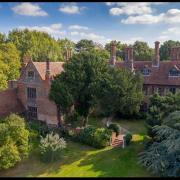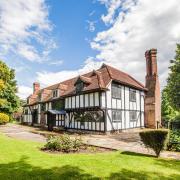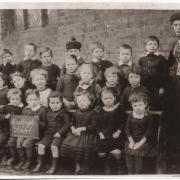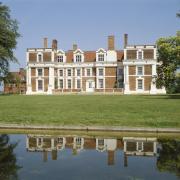Stansted Mountfitchet Castle (or simply Mountfitchet Castle) has played a significant role in the history of Essex. We discover its fascinating story and its incredible return to glory.
The ancient stones belonging to the original Mountfitchet Castle were taken by villagers to build their own houses in the early 13th century when the castle was destroyed by King John. Before that day came to pass, the castle played an important role in the history of Essex.
Originally an Iron Age fort, then a site occupied by the Romans, Saxons and Vikings, the history of Mountfitchet Castle is considerable. In 1066, Robert Gernon, thought to be a relative of William the Conqueror, attacked the site alongside the Norman Conquest and took it for his own. Here Gernon built himself a castle, stone remnants of which can still be seen on site today.
Gernon was known in the Domesday Book as Robert Greno and came over to England from France with William the Conqueror. Gernon was rewarded by William I with titles and vast swathes of land in the county. Robert’s son and heir, William, changed his name to Mountfitchet. William founded the Abbey of Stratford Langthorn in West Ham. This monastery was once geographically located in Essex, but now sits in the Borough of Newham, London.
When William de Mountfitchet founded the Abbey of Stratford Langthorn in 1135, its acreage was originally 11 acres including two mills, meadowland and a wood. The Abbey was dedicated to St Mary and became a Cistercian monastery complete with 1,500 acres until the Dissolution of the Monasteries.

There is not much known about Gilbert de Mountfitchet, William’s son. Gilbert’s son Richard was Keeper of the Forests of Essex and was a custodian of the King’s house at Havering, as well as other houses in the Forest that were given to him by King Henry II.
When Richard died, his son was a minor and was left in the care of Roger de Lacy, Constable of Chester. Roger de Lacy was an important man possessing many titles. He was a baron, a sheriff of both Cumberland and Yorkshire as well as being a very fine soldier and crusader. Richard Jnr Mountfitchet was also a Royal ward of King John.
History has not been kind to King John, and he is remembered as an abject failure. Often described as a sort of pantomime villain, King John was such a liability that the famous Magna Carta, the historic bill that placed limits of power on the King, was passed in response to his recklessness.
As John Hudson of the Institute of Medieval Studies at St Andrews said, ‘Make no mistake, King John was a bad king. He lost a large amount of possessions inherited, in particular lands in France, like Normandy and Anjou. He manages to surrender his realm to the Pope and ends up facing a huge baronial rebellion, a civil war and a war with France. In terms of failures, he is one of the worst kings.’
So, one can understand why the young Richard de Mountfitchet sided with the barons against King John! On the Mountfitchet Castle website, it mentions that Richard joined with ‘a group of magnates, drawn together by family ties or by private or public grievances, whose sphere of influence was chiefly centred in Essex.’
Many of Richard’s cousins and relations were involved, paving the way for Richard to side against King John. When the king heard about this disloyalty, he was quick to outlaw the leaders, Eustace and Fitzwalter. In this process of rooting out the traitors many of their castles were destroyed by King John and this is precisely what happened to Mountfitchet Castle. In 1215 the castle was attacked.
This same year, Richard de Mountfitchet was one of a select number of barons who were at Runnymede, a meadow close to Windsor Castle, to witness the seal of the Magna Carta. Richard was clearly a fine, brave knight and was described by Henry Laver as one of the three bravest knights in England, and of these he was the youngest. Richard died in 1258 with no heirs as he never married. His estates, restored by King Henry III, were divided between his three sisters. This brought an end to the Mountfitchet reign of the castle.

Incredibly, save for some Royalists during the Civil War in the 17th century who were holding out there against Cromwell, it has lain empty ever since. As the castle website describes, ‘This Motte and Bailey castle site lay forgotten for over 750 years and was soon taken over by nature and covered in dense scrub, trees, brambles and bushes and was totally hidden until 1975, when the owner, Alan Goldsmith, had a dream to rebuild and restore the castle to its former glory.’
The original earthworks were discovered, and after a lengthy battle with planners, the green light was given and in 1980 the reconstruction of Mountfitchet Castle started. The work was painstaking and included input from specialists, archaeologists and historians. The oak needed to construct the village houses and palisade (fencing) was brought in from Suffolk and the reed to thatch the roofs from Norfolk. Wattle and daub plaster for the houses was even made up the traditional way using pigs' manure and horse hair!
Carpenters adorned the buildings with wood carvings, as would have been the norm in the medieval era. Animals such as deer, goat, sheep and domestic fowl that would have been roaming in the Norman era are back in situ at Mountfitchet Castle today. In 2013, a cockerel who lived at the castle was nominated for the world record as the tallest chicken alive measuring 66cm in height!
The end result? The only wooden Motte and Bailey reconstruction on its original site in the world was opened to the public in 1985. A time capsule, an open-air museum, a Scheduled Monument and a National Historic Monument, Mountfitchet Castle is nothing short of a national treasure.



























